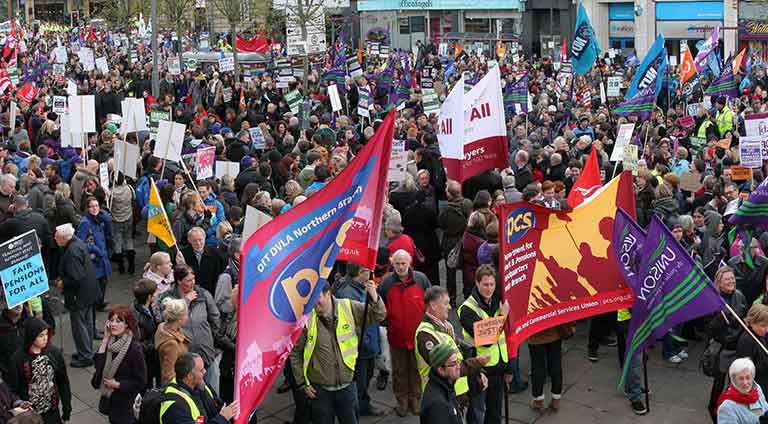AN ARGUMENT OVER which major power is doing most to harm workers’ rights turned comical this week after a spat between the Biden administration and the British one.
At Davos on Wednesday, US Labour Secretary Martin Walsh criticised new UK laws which would restrict the impact of a huge wave of strikes now crippling Britain.
But a spokesman for British leader Rishi Sunak hit back, saying that the US had even more laws preventing workers from going on strike than the UK had!
At the same time, both nations have accused China of using forced labor: yet the East Asian nation has signed a removal-of-forced-labor treaty with the International Labor Organization, while the United States has refused to do the same.

HOW THE DISAGREEMENT STARTED
This week at the World Economic Forum at Davos, Gilbert Houngbo, director general of the International Labour Organisation, shared his deep concern about the British government’s suppression of workers’ rights. He told the BBC: “We are very worried that workers may have to accept situations so they don’t get themselves out of a job.”
In response, US secretary Walsh said that he had not read the legislation “but I certainly will work with the ILO… I would not support anything that would take away from workers.”
That triggered a response from 10 Downing Street, pointing out the U.S.’s many sins in that area. Prime Minister Rishi Sunak’s official spokesman said: “Many [U.S.] states prohibit strikes by emergency services altogether. Fire services are banned from striking in most states. And in December, President Biden signed legislation to block a national rail strike.”
The UK Daily Mail, a nationalistic newspaper, ran a headline: “Butt out, Biden!”
WHO WORKS WITH ILO?
Observers noted that Walsh said that he would “work with the ILO” but the United States had a long record of refusing to do that.
The ILO has created a list of eight rights declarations to create ideal labor conditions for workers around the world, and challenges countries to see them as targets to aim for.
China has now signed up to six out of eight rights declarations protecting workers of all ages, genders and backgrounds.
In contrast, the United States has ratified only two, putting it below most Asian, African and other Western nations.
Last year, battles for workers’ rights and unionization erupted in the United States, particularly around the pay and conditions at Amazon and Starbucks. However, China cannot criticize, as it is also lagging in rights associated with unionization.
CORE PRINCIPLES
The ILO encourages countries to sign pledges covering four core principles: forced labour, child labour, discrimination, and freedom of association/ collective bargaining.
China has now agreed to most of them, but is still lagging on the final pair of rights, which deal with collective bargaining. While the country does have powerful trade unions, Chinese legislation does not yet match ILO recommendations in that area.
FORCED LABOR
China’s decision last year to sign the ILO declaration on forced labor means that any cases that emerge in the county have to be promptly dealt with by the authorities.
Washington has long accused China of using prison labor, with the Western media loudly echoing the claim – although the United States itself uses prison labor, in some cases with prisoners receiving minimal or zero pay.
Image at the top shows a UK protest from October 2022 from Mutney/ Wikimedia Commons


